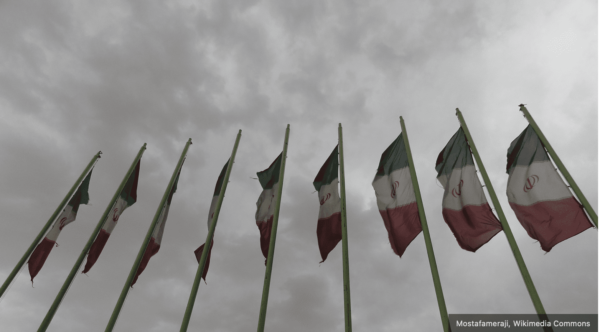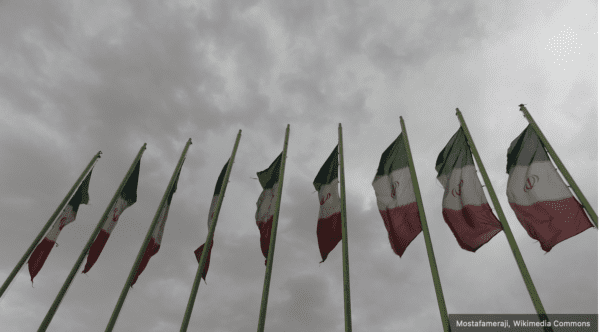
This story originally was published by Real Clear Wire
By Julian Spencer-Churchill
Real Clear Wire
A year has passed since the triggering of the nationwide women-led protests in Iran on September 16, 2022, by the murder of Mehsa Amini at the hands of the moral police on the pretext of not wearing a full hijab. Aside from economic issues, this is the most controversial social-political issue in Iran since the 1979 revolution. The disruptive but peaceful demonstrations endured for four months until early January 2023, when they succumbed to the regime’s strategy of repression and conciliation. The West played little part in facilitating the reformist social-movement, which is a foreign policy error given the salience of Iran’s geostrategic position in the Persian Gulf, and its strengthening alliances with Russia and China, both challengers to the current democratic-dominated international order.
The social movement failed in its maximalist goals because of successful regime repression that exploited a range of instruments including the application fatal violence, but which also made seemingly irreversible concessions. The moral as well as the regular police, and various militias under the control of the IRGC (Iranian Revolutionary Guard Command) confronted gatherings with a number of tactics. These included assaulting demonstrators in the streets, as well as sexual assaults and deliberate torture during temporary custody, sexual assaults and deliberate rape of women in prisons, as well as on the street, and direct attacks on crowds by firearm-equipped militias. In one of two recorded incidents, a 10-year-old child named Kian Pirfalak was killed. In total, at least 600 people have been killed during the four-month protests, 70 of whom were children.
Typical of totalitarian states, meaning governments served by police forces that have extensive peacetime record-keeping facilitating swift intervention against their populations, most of the repression exercised came in two forms. Collective punishment was applied against families and other cohesive groups, and those atomized individuals who could not be deterred from protesting by their associations, were targeted through their employment. In the university milieus where many of these protests were best organized, professors have been fired and students expelled, and families of those identified as having been killed in protests have been arrested.
Where the liberalising social movement intersected with anti-colonial sentiments, as it did in the non-Persian regions of Iran, there was a more direct use of violent repression. In Sistan and Baluchistan provinces, more than 100 people, including 13 children, were killed in just one attack. In Kurdistan, there are house-to-house searches, and demonstrators have been killed by police dispersing crowds with firearms. There are videos showing security agents firing at the homes where people are shouting anti-government slogans and singing resistance songs out of the windows of their houses at night. The fact that many repressive forces spoke Arabic on the street strengthened the suspicion that the Islamic Republic is using the forces of Lebanon’s Hezbollah and Iraq’s Hashd al-Shaabi to suppress Iranian protesters.
In the immediate months following the successful suppression of the movement, Hijab rules and gender segregation in universities became nominally more strict. In many public places, especially universities, subways, banks, airports, service was refused to women who did not have a full hijab. However, this was meant to cover for the weakness of the regime that, a year later, has made de facto concessions. The regime has not intervened against a broad new social consensus achieved by the four months of protest, in large part because Iranian society has achieved a new threshold of irreversible self-assertiveness. At the time of this writing in 2023, most pre-adolescent girls and women no longer wear headscarves, although there are still publicized police interventions.
Even as far back as 2013, 42 percent of male and female Iranian respondents believed that the Hijab should be optional, and by 2017 this number had risen to 49 percent. The 2022 protests are estimated to have eroded support for the mandatory wearing of the Hijab by another 30 percent. One estimate is that in urban areas, up to 86 percent of Iranian women do not wear the Hijab outdoors. The regime’s nominal restrictions against public dance, singing or music, are now often ignored and restrictions not enforced. Public displays of support for the protesters bv well-known sports and cultural figures personalities manifests itself internationally as refusal to wear the headscarf, but domestically comes in the form of absenteeism from religious and political ceremonies. A critical shift occurred among Iranian men, who tied the Hijab protests to other liberalizing issues, such as regime transparency against corruption. The protests invented new terms: because the word “no-hijab” was associated with immorality within Muslim circles, and often used as an insult, the newly emergent normative descriptor is “a girl who wears the optional attire.”
These shifts in sentiment are also influencing the major institutions of Iran. A number of Iranian clerics sided with the reform demands of the protestors. The same is true for the surprising silence of many high-ranking military commanders. In a public speech, the Ayatollah Ali Khamenei called the situation sensitive and demanded that the commanders take a stand and support the regime. Citing the example of Hussein bin Ali, the third imam of the Shiites, he said that when Hussein had called his companions, they did not helped and left him alone, but they regretted his martyrdom afterward.
The principal reason the protests failed was a lack of coordination, what is technically termed a collective action problem: when groups fear abandonment by coalition allies, so that they suffer the full wrath of government suppression, no group dares defy the regime. Furthermore, there is a need for policy coordination so that groups do not fear that their policy interests will conflict. An attempt at synchronising the Iranian protest to assuage social differences in Iran, was made by a six-person council that met at Georgetown University, and detailed their collective position in a published document entitled “charter of solidarity.” However, the declared policy was so contradictory that it failed to have an impact, alienating nationalists and Islamists, two groups some of whose members were supporting the protests. Nor did the charter offer an outline for a post-militia government or constitution. The consequence of this disorganization was that even reformist Iranian members of parliament did not actively support the protesters, whereas they had sided against the government in previous economic and subsidies-related protests.
Iran’s liberalization is a core interest of the Western democracies, because removing authoritarian or illiberal regimes, when there is a middle class with sufficient critical mass, reduces insecurity that leads to war, proliferation, and terrorism. Protest supporters in the West cutting their hair in solidarity, and rhetorical support by Western politicians, did not produce much of a desired effect. The Western democracies must be better prepared to help solve the collective action problem of a future Iranian social movement. First, it should subsidizing a dialogue between as broad a coalition as possible between representatives of the different societal cohorts involved in protests. That many of the protest actions in Iran were in response to the calls for specific actions by exiled Iranian celebrities, shows the impact of coordination. Second, this harmonisation must be prompt, since economic fatigue and the lack of cumulative progress was the main reason that caused the movement’s energy to dissipate after four months.
It is inevitable that protests will come again to Iran, and each preceding protest lowers the threshold for resistance by exercising individuals who can be the nuclei for organizing cells in the future. There have been protests aimed specifically at the regime’s legitimacy in June 2009, early January 2018, November 2019, December 2019, and after the downing of the Ukrainian plane outside Tehran. The 2022 protests raised consciousness among what was termed the “grey” strata of society, who were previously deferential to the regime. The Mahsa movement has intensified this crisis of legitimacy, one of whose manifestations has been a lack of widespread participation of people in recent anti-American demonstrations organized by the government, as well as the persisting low levels of participation in an electoral democracy where the candidates are vetted by religious authorities. The Ayatollah Ali Khamenei has argued that people’s participation in elections and demonstrations against the U.S. is like a strong fist of people on the U.S.’ mouth, and their decline is a clear indicator of change.
Julian Spencer-Churchill, Ph.D., is an associate professor of international relations at Concordia University (Montreal), former army engineer officer, and has written extensively on Pakistan, where he conducted field research for over ten years.




